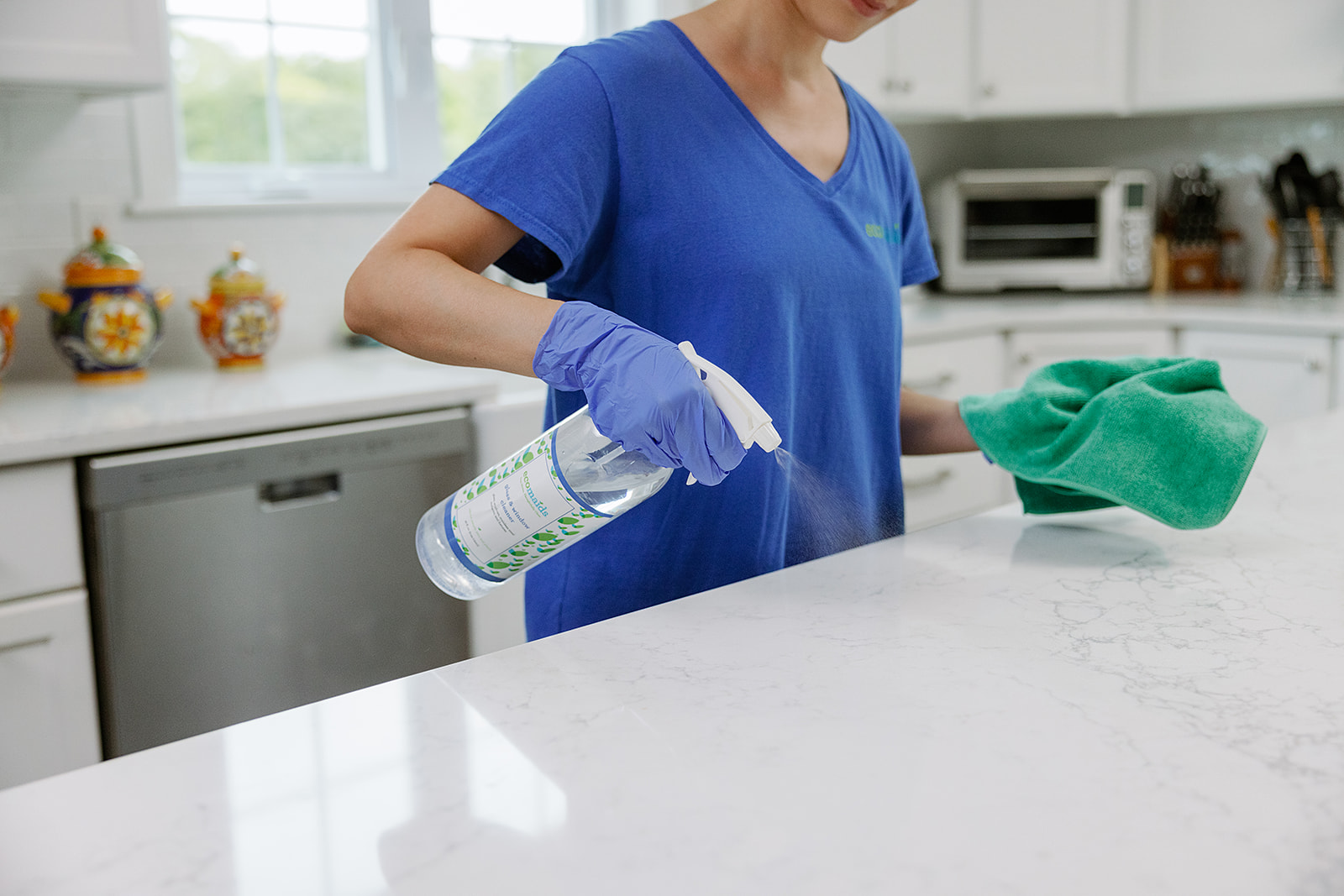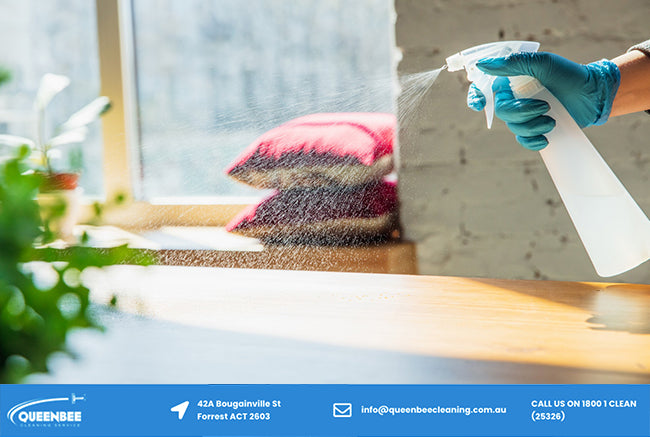Just how to Keep Your Home Sanitary: Everyday Cleaning Tips for Defrosted and Cleaned Every Few Months
Just how to Keep Your Home Sanitary: Everyday Cleaning Tips for Defrosted and Cleaned Every Few Months
Blog Article
Understanding the Requirement for Thoroughly Disinfecting and Sterilizing Often Touched Surface Areas in High-Traffic Areas
In the world of public health and security, the careful disinfection and sanitization of often touched surface areas in high-traffic areas stand as paramount actions in avoiding the spread of harmful microorganisms. The relevance of this technique expands much beyond simple tidiness, delving right into the realm of illness avoidance and neighborhood wellness. By checking out the different elements of surface sanitation, from the threats related to overlooking cleansing procedures to the reliable approaches that can be employed, a clearer understanding emerges of the essential role these methods play in securing public wellness. As we browse this conversation, it comes to be evident that the implications of extensive surface sanitation resound not only within the boundaries of a details atmosphere however likewise reverberate on a wider range, impacting the health and wellness of individuals across diverse common settings.
Relevance of Surface Area Sanitation
Highlighting the extensive disinfection of high-traffic surface areas is crucial in preserving a sanitary atmosphere and avoiding the spread of harmful microorganisms. High-touch surface areas such as door handles, light switches, lift buttons, and counter tops work as reproducing grounds for viruses and microorganisms. Regular sanitation of these surfaces is necessary to reduce the threat of contamination and transmission of diseases.
By implementing a robust disinfection procedure, businesses and establishments can create a more secure environment for workers, customers, and site visitors. Correct surface area disinfection not only minimizes the spread of infectious conditions however additionally infuses confidence in the tidiness and safety and security of the facilities. This aggressive strategy demonstrates a commitment to wellness and wellness, which is especially vital in high-traffic locations where the probability of exposure to pathogens is enhanced.
In addition, surface area disinfection plays an essential function in total infection control techniques. Combined with hand hygiene methods, using masks, and preserving physical distancing, detailed sanitation of high-touch surface areas creates a comprehensive defense against the transmission of harmful microorganisms. Prioritizing surface disinfection is a crucial component of an alternative approach to health and safety in shared spaces.
Risks of Neglecting Cleaning Practices
Disregarding comprehensive sanitation of high-traffic surface areas dramatically increases the danger of viral and microbial contamination, presenting a severe risk to the health and safety and security of people often visiting these areas. Failure to implement appropriate cleaning practices can bring about the build-up and spread of damaging virus, consisting of germs and viruses, on frequently touched surface areas such as doorknobs, handrails, elevator switches, and counter tops.

Moreover, neglecting the value of complete cleaning not just jeopardizes the health of people but additionally threatens efforts to maintain a sanitary and clean atmosphere. It is important to identify the importance of proper disinfection procedures in preventing the spread of infections and guarding public health.
Reliable Sanitation Techniques
To keep optimum cleanliness and decrease the threat of contamination on high-traffic surface areas, using efficient sanitation methods is crucial. One of one of the most efficient and typical disinfection approaches is using chemical anti-bacterials. These items can vary in stamina and composition, with some targeting details pathogens like infections or germs. It is crucial to follow the manufacturer's guidelines for proper dilution, contact time, and air flow when making use of chemical anti-bacterials to ensure their efficiency - Everyday cleaning.
One more efficient technique is the use of UV-C light. UV-C light has actually been shown to be effective in killing a wide range of microorganisms by interrupting their DNA structure, thus preventing them from replicating. It is crucial to make use of UV-C light effectively, making certain that the right strength and exposure time are used to accomplish the desired disinfection outcomes.
In addition, utilizing steam cleansing as a disinfection method can be highly reliable, especially on surface areas that are heat-resistant. Steam can penetrate porous surface areas and eliminate germs, infections, and other pathogens successfully. When utilizing steam cleaning, it is essential to ensure that the surface area reaches the needed temperature level for an enough quantity of time to ensure appropriate disinfection.
Impact on Public Health And Wellness
The upkeep of high requirements of tidiness and disinfection on my sources high-traffic surface areas plays an essential role in safeguarding public health and wellness. Regularly touched surface areas in locations with high footfall, such as doorknobs, hand rails, elevator buttons, and washroom centers, act as breeding grounds for unsafe pathogens. Falling short to appropriately find out here decontaminate these surfaces can cause the quick spread of infectious illness within neighborhoods. By applying complete disinfection methods, the threat of transmission of infections, germs, and various other bacteria can be significantly lowered.
Reliable sanitation techniques not just shield individuals from dropping sick yet additionally contribute to the overall wellness of society. Public health and wellness authorities emphasize the relevance of preserving clean settings to stop outbreaks and contain the spread of diseases. In high-traffic areas like airport terminals, institutions, hospitals, and public transport systems, the impact of strenuous disinfection measures can not be downplayed. Prioritizing the sanitization of regularly touched surfaces is a positive approach to advertising public health and wellness and enhancing the security of people in common spaces.
Carrying Out Routine Cleansing Protocols
Immediately instituting and sticking to a constant routine of cleaning methods is paramount for keeping the sanitation and safety and security of high-traffic surfaces. Normal cleansing procedures are important in stopping the accumulation of bacteria and microorganisms on frequently touched surfaces, particularly in areas with high foot website traffic. By applying an organized technique to cleansing, organizations can properly decrease the danger of disease transmission and produce a much healthier setting for employees, customers, and the general public.
To establish a reliable cleaning schedule, it is essential to determine high-traffic areas that need frequent focus. These locations might include doorknobs, handrails, elevator switches, restroom centers, and shared devices. Carrying out a regular cleansing regimen that targets these surface areas numerous times a day can significantly decrease the spread of dangerous microorganisms and infections.
Additionally, utilizing suitable cleansing representatives and disinfectants is vital to guaranteeing that surfaces are completely sterilized. Routine training of cleaning up team on proper cleansing strategies their explanation and the importance of adherence to the cleaning schedule is likewise important in preserving a hygienic environment. By prioritizing consistent cleaning protocols, organizations can advertise the wellness and health of individuals that engage with these high-traffic surfaces.

Final Thought
To conclude, it is important to focus on thorough disinfection and sanitization of often touched surface areas in high-traffic locations to stop the spread of hazardous microorganisms and keep public health. Neglecting proper cleaning methods can boost the threat of contamination and transmission of conditions. By applying normal cleansing methods and making use of effective disinfection methods, we can create a more secure setting for every person (Vacuum Carpets). It is essential to identify the value of preserving clean surface areas in high-traffic locations to make sure the wellness of the neighborhood.
In the world of public health and safety, the thorough sanitation and sanitization of frequently touched surface areas in high-traffic areas stand as extremely important actions in protecting against the spread of dangerous pathogens. By discovering the different elements of surface sanitation, from the dangers associated with disregarding cleaning methods to the effective approaches that can be utilized, a more clear understanding emerges of the essential role these techniques play in protecting public wellness.In addition, utilizing vapor cleaning as a sanitation method can be extremely reliable, particularly on surface areas that are heat-resistant. When using heavy steam cleansing, it is vital to ensure that the surface gets to the required temperature level for an enough quantity of time to ensure correct disinfection.
In final thought, it is critical to prioritize comprehensive sanitation and sanitization of often touched surfaces in high-traffic areas to stop the spread of harmful microorganisms and maintain public health.
Report this page